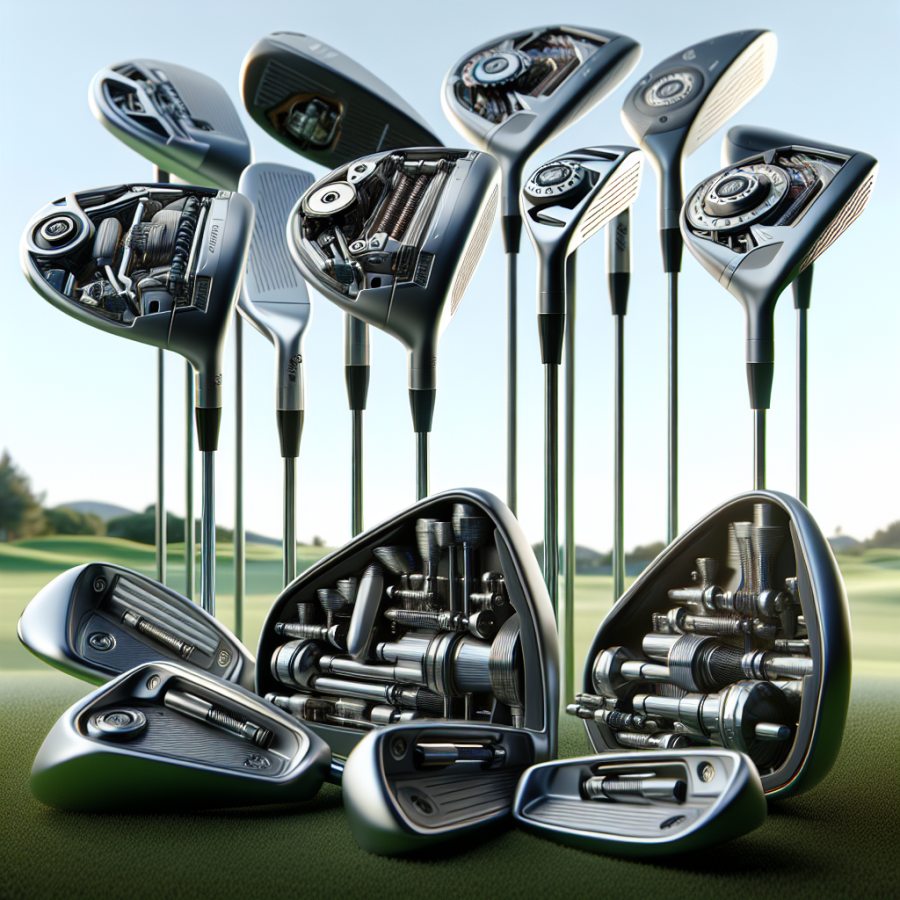The Impact of Golf Club Technology on Player Performance
The advent of technology has revolutionized every aspect of our lives. When it comes to sports equipment, the effects of this tech revolution are evident; the golf industry, in particular, has greatly benefited. The latest technological advancements have greatly influenced golf club design which, in turn, has significantly impacted player performance.
Over recent years, golf clubs have transformed immensely. They are no longer the simple wooden sticks used to hit small balls into holes hundreds of yards away. Modern golf clubs are now highly sophisticated pieces of sports equipment, each designed with a specific purpose.
One of the most significant advancements has been the use of new materials in the construction of golf clubs. The shift from persimmon woods and forged irons to metal woods and cast irons has given manufacturers the freedom to manipulate clubhead design. These materials are not only lighter but also stronger, enabling manufacturers to increase clubhead size without adding extra weight. This change has made it easier for golfers to make accurate shots while lowering the chance of any off-center hits.
The introduction of adjustable golf clubs is another technological leap that has helped improve player performance. Golfers can now adjust the loft, lie, and face angle of their clubs to match their swing characteristics. This level of customization was unthought of a few decades ago. It has enabled golfers to tweak their clubs to suit specific game conditions or to compensate for any inconsistencies in their swings.
Moving beyond the club design, advanced computer simulations and analytics have also played a role in improving player performance. With the help of these technological tools, golfers can now assess their performance in a detailed manner. They can understand their swing better, and know exactly how distance, speed, and trajectory are influenced by their swing. Furthermore, they can use this information to select the ideal club for each shot.
Furthermore, trackman technology has revolutionized how golfers practice and understand their golf game. It provides precise metrics such as club path, face angle, angle of attack, and many more. These insights were unimaginable a few decades ago; before the advent of technology, only skilled professional coaches could find any underlying issues with your swing – and even then, only a trained eye could detect these nuances. Now, this technology grants golfers the opportunity to understand their game on a deeper level and make informed decisions about their equipment and swing mechanics.
It is crucial to point out, though, that an expensive, high-tech club won't instantly transform a novice golfer into a top player.
The Physics of Golf Clubs: From Material to Design
The game of golf has long been a popular pastime appreciated by millions around the globe. However, few golfers ever consider the science and technology behind the game. In particular, the design and construction of golf clubs are largely underappreciated aspects of the sport. The club's material and design, crucial in maximizing performance, are heavily influenced by various principles of physics.
The first important aspect of a golf club's physics is the material from which it is made. In early days, golf clubs were crafted from simple wooden sticks. Over time, clubs came to be crafted from numerous materials, each offering specific advantages. For instance, lightweight metals such as titanium and aluminum are now widely used because they allow the production of larger clubheads with the same mass. The lower weight aids in increasing the speed of the swing.
Alongside the material, the design and shape of the golf club also play a significant role in its performance. A standard club consists of two essential parts: the shaft and the clubhead. The clubhead is further divided into the hosel, face, and sole. The face is striking the ball, the hosel connects the face to the shaft, and the sole is the bottom part of the club. The design of these components significantly affects the final trajectory and speed of the golf ball.
The clubhead design has been revolutionized by the physics principle of ‘moment of inertia,’ which is essentially the resistance to twisting. When a ball is hit slightly off center, a club with a higher moment of inertia will twist less, hence losing fewer precious shots to sidespin. Club designers leverage this by increasing the weight distribution on the clubhead's perimeter, which elevates the moment of inertia.
The shaft is not just an ordinary stick. It connects the player's hands to the clubhead and therefore determines the force that can be transferred to the clubhead. The physics of the shaft involves the principle of torsional stiffness, which indicates how much the shaft twists during a swing. A stiffer shaft will provide more control, while a flexible shaft will deliver more power but less precision.
The "loft" or the backward slope of the clubface also plays a vital role. It impacts the angle at which the golf ball leaves the club, determining the height and distance of the shot. Lower loft angles result in longer distances but lower trajectories, while higher lofts produce higher trajectories but shorter distances.
Lastly, the grooves on a clubface are accountable for creating backspin.




